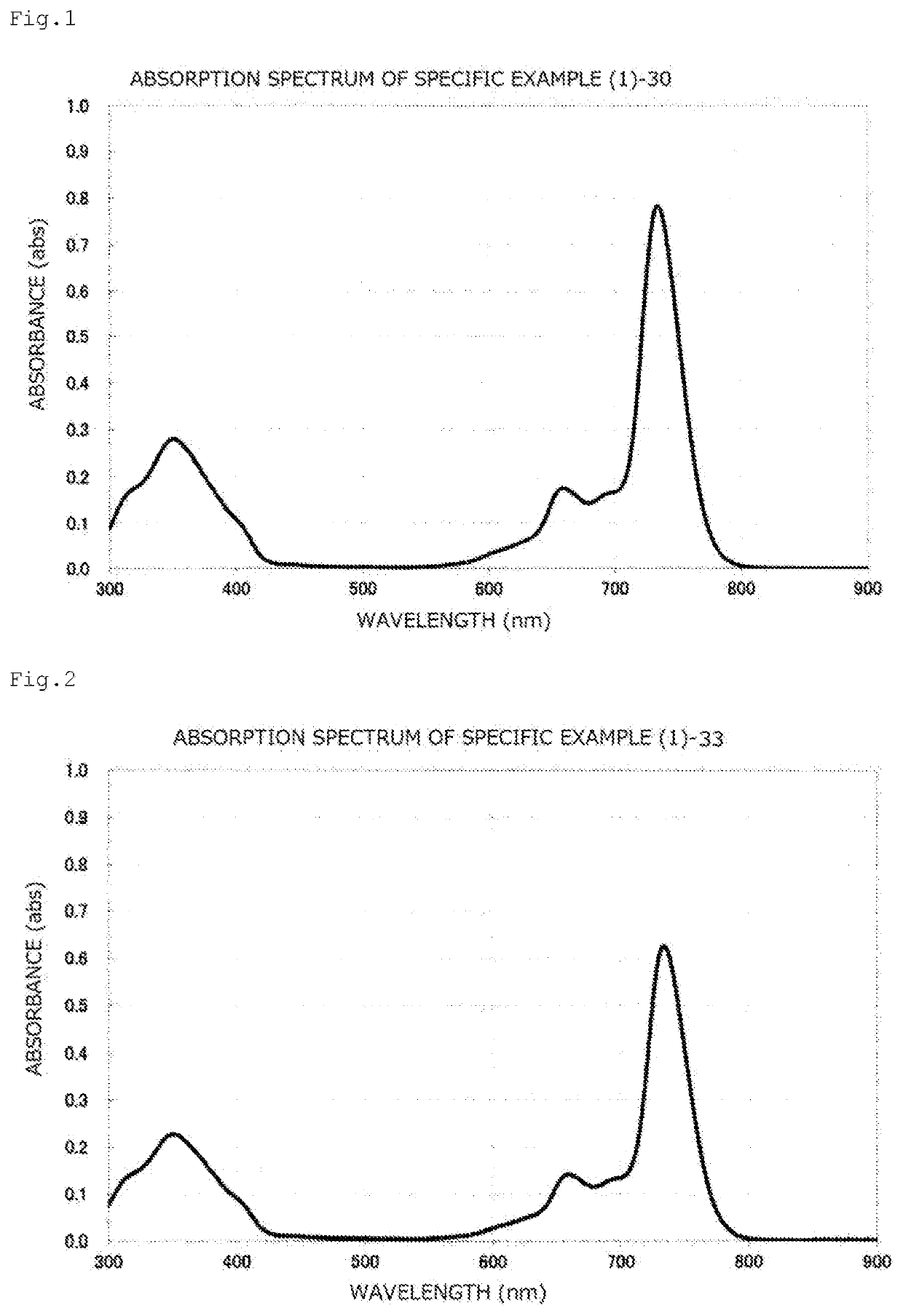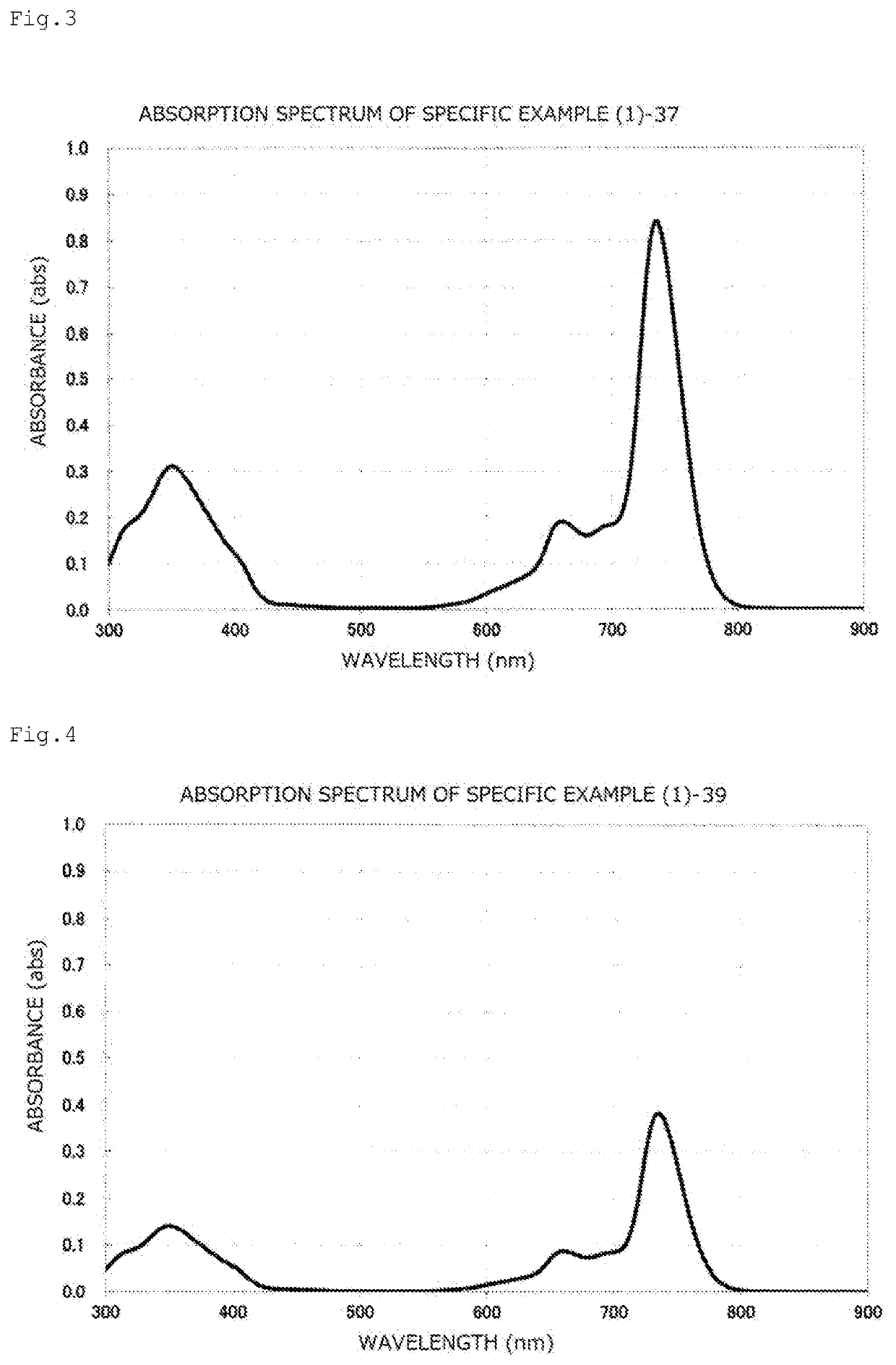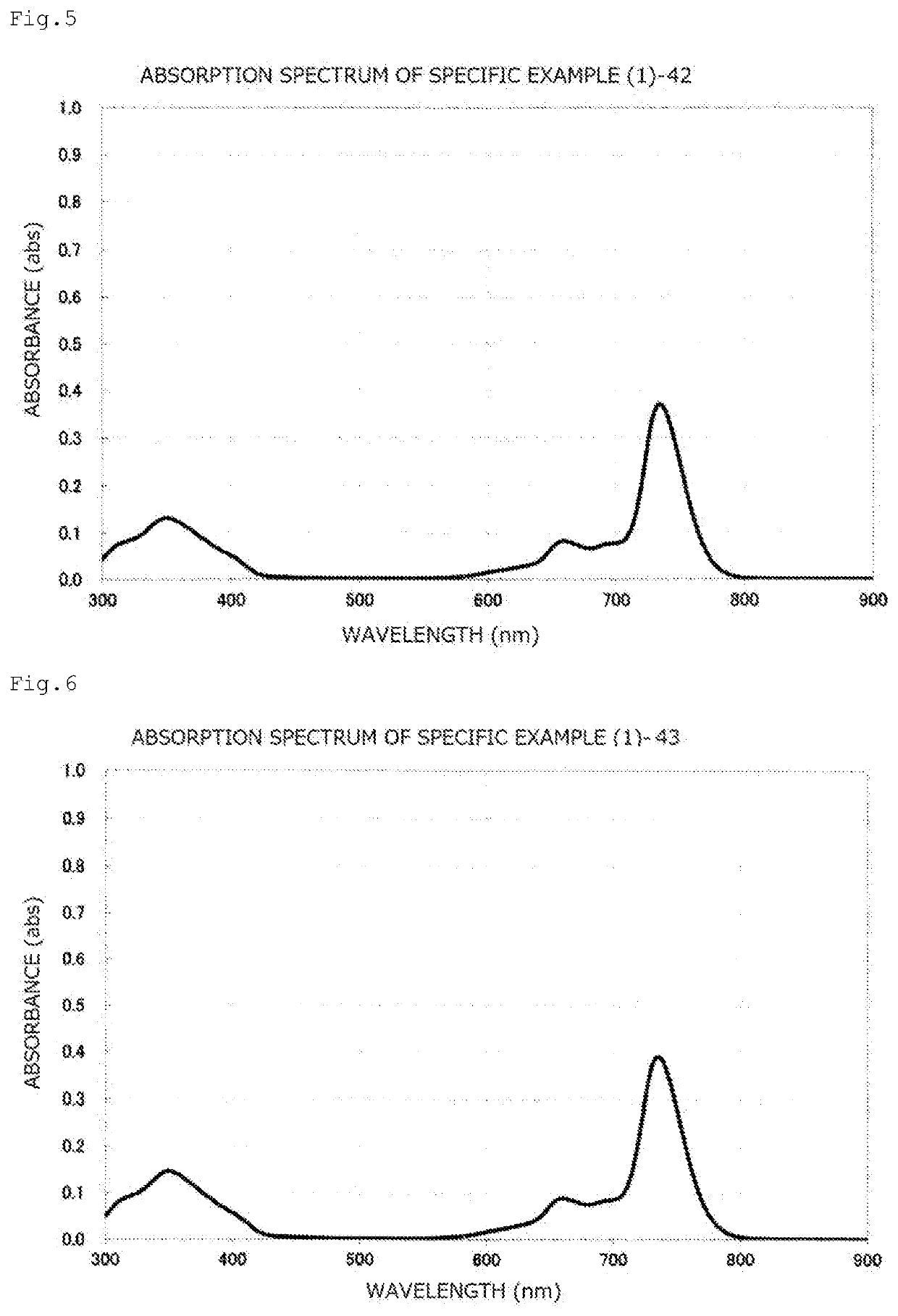Phthalocyanine-based compound and uses of same
a technology of phthalocyanine and compound, which is applied in the direction of porphines/azaporphines, other chemical processes, organic dyes, etc., can solve the problems of poor near-infrared absorbing ability and durability of diimmonium salt-based colorants, and low durability of colorants. , to achieve the effect of strong absorption, high durability and weak absorption
- Summary
- Abstract
- Description
- Claims
- Application Information
AI Technical Summary
Benefits of technology
Problems solved by technology
Method used
Image
Examples
example 1
[Example 1] Producing of Phthalocyanine-Based Compound (Specific Example (1)-30)
[0179]4,7-Bis(4-methoxybutyl)-1,3-diiminobenzoisoindoline (18.6 g), 4.76 g of vanadium trichloride, and 13.74 g of DBU were stirred in 100 mL of 1-pentanol for 24 hours at an internal temperature of 125° C. Methanol (600 ml) was added thereto, the precipitate was collected by filtration, dried and purified by column chromatography (silicagel / toluene), thereby obtaining 14.5 g of dark green powder. From the following analysis results, it was confirmed that the obtained compound is the intended compound.
[0180]MS: (EI)m / z 1267M+)
[0181]Values of elementary analysis: actual measurement values (C: 68.20%, H: 7.66%, N: 8.82%); theoretical values (C: 68.17%, H: 7.63%, N: 8.83%)
[0182]A toluene solution of the compound obtained in this way had maximum absorption at 734.0 nm, and the gram absorption coefficient thereof was 1.21×105 mL / g·cm. The absorption spectrum chart thereof is illustrated in FIG. 1.
example 2
[Example 2] Producing of Phthalocyanine-Based Compound (Specific Example (1)-33)
[0183]Dark green powder (14.8 g) was obtained in the same manner as in Example 1, except that 20.3 g of 4,7-bis(4-ethoxybutyl)-1,3-diiminobenzoisoindoline was used instead of 18.6 g of 4,7-bis(4-methoxybutyl)-1,3-diiminobenzoisoindoline in Example 1. From the following analysis results, it was confirmed that the obtained compound is the intended compound.
[0184]MS: (EI)m / z 1379M+)
[0185]Values of elementary analysis: actual measurement values (C: 69.57%, H: 8.15%, N: 8.08%); theoretical values (C: 69.59%, H: 8.18 N: 8.12%)
[0186]A toluene solution of the compound obtained in this way had maximum absorption at 734.0 nm, and the gram absorption coefficient thereof was 1.19×105 mL / g·cm. The absorption spectrum chart thereof is illustrated in FIG. 2.
example 3
[Example 3] Producing of Phthalocyanine-Based Compound (Specific Example (1)-37)
[0187]Dark green powder (17.7 g) was obtained in the same manner as in Example 1, except that 25.9 g of 4,7-bis(4-phenoxybutyl)-1,3-diiminobenzoisoindoline was used instead of 18.6 g of 4,7-bis(4-methoxybutyl)-1,3-diiminobenzoisoindoline in Example 1. From the following analysis results, it was confirmed that the obtained compound is the intended compound.
[0188]MS: (EI)m / z 1764M+)
[0189]Values of elementary analysis: actual measurement values (C: 76.24%, H: 6.42%, N: 6.36%); theoretical values (C: 76.21%, H: 6.40% N: 6.35%)
[0190]A toluene solution of the compound obtained in this way had maximum absorption at 735.5 nm, and the gram absorption coefficient thereof was 8.63×104 mL / g·cm. The absorption spectrum chart thereof is illustrated in FIG. 3.
PUM
| Property | Measurement | Unit |
|---|---|---|
| transmittance | aaaaa | aaaaa |
| transmittance | aaaaa | aaaaa |
| reaction time | aaaaa | aaaaa |
Abstract
Description
Claims
Application Information
 Login to View More
Login to View More - R&D
- Intellectual Property
- Life Sciences
- Materials
- Tech Scout
- Unparalleled Data Quality
- Higher Quality Content
- 60% Fewer Hallucinations
Browse by: Latest US Patents, China's latest patents, Technical Efficacy Thesaurus, Application Domain, Technology Topic, Popular Technical Reports.
© 2025 PatSnap. All rights reserved.Legal|Privacy policy|Modern Slavery Act Transparency Statement|Sitemap|About US| Contact US: help@patsnap.com



